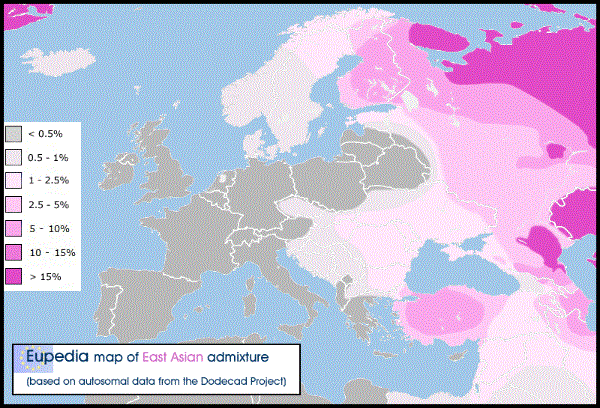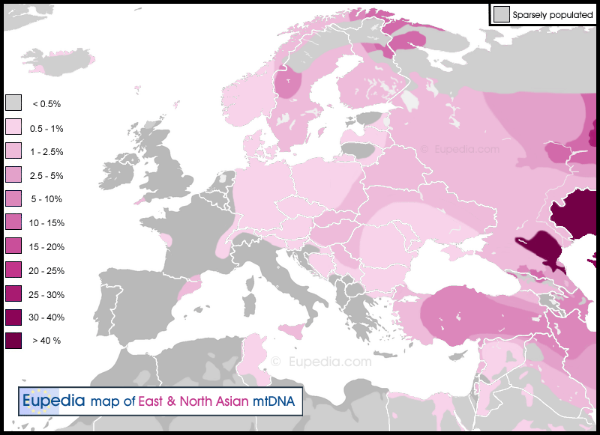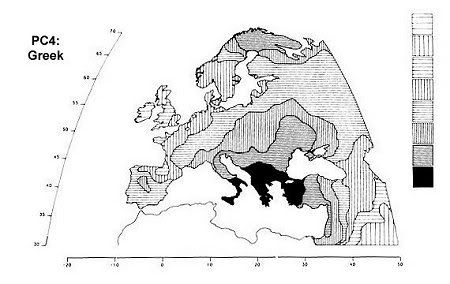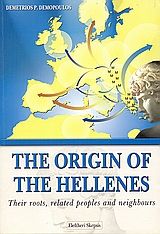Post by Admin on Nov 22, 2022 20:58:20 GMT
and the Phiistines, who were a branch of the western sea-peoples who harried Egypt and the whole eastern end of the Mediterranean about 1200 B.C., the time of the Trojan War, and who may have come from the general neighborhood of the Aegean.
The Philistines (Fig. 33) are represented as straight-nosed, European-looking Mediterraneans, with light skins;
REPRESENTATIONS OF PALESTINIANS IN EGYPTIAN AND BABYLONIAN ART
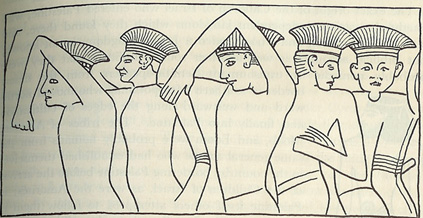
Fig. 33. Philistines. (Egyptian.)
www.theapricity.com/snpa/chapter-XI7.htm
Philistines
Allen Jones suggests that the name "Philistine" represents a corruption of the Greek phyle histia ("tribe of the hearth", with the Ionic spelling of "hestia").[38]
Several theories are given about the origins of the Philistines. Some biblical passages connect the Philistines to other biblical groups such as Caphtorim and the Cherethites and Pelethites, which have both been identified with Crete[7] which has led to the tradition of an Aegean origin,[8]
In 2016, a large Philistine cemetery was discovered near Ashkelon, containing more than 150 dead buried in oval-shaped graves, indicating an Aegean origin, which now has been confirmed by genetic testing.[7][12][13][14] [15][16]
Britannica.com:"Already, the find in Ashkelon seems to point toward an Aegean origin, since the oval-shaped graves resemble those found in the Aegean cultural sphere. Genetic testing of the human remains will provide further information."
Archaeologists Find First Philistine Cemetery
web.archive.org/web/20160712143156/https://www.britannica.com/story/archaeologists-find-first-philistine-cemetery
Philippe Bohstrom, 'Archaeologists find first-ever Philistine cemetery in Israel,' Haaretz 10 July 2016. [1]: "Cemetery in ancient Ashkelon, dating back 2700-3000 years, proves the Philistines came from the Aegean,
Archaeologists Find First-ever Philistine Cemetery in Israel
www.haaretz.com/archaeology/2016-07-10/ty-article-magazine/archaeologists-find-first-ever-philistine-cemetery-in-israel/0000017f-db35-db22-a17f-ffb52c360000
Philistine Cemetery Unearthed at Ashkelon
www.biblicalarchaeology.org/daily/ancient-cultures/ancient-israel/first-ever-philistine-cemetery-unearthed-at-ashkelon/
Romey, Kristin (2016). "Discovery of Philistine Cemetery May Solve Biblical Mystery." National Geographic (website). Retrieved 31 July 2017.
news.nationalgeographic.com/2016/07/bible-philistine-israelite-israel-ashkelon-discovery-burial-archaeology-sea-peoples/
Drews 1995, p. 69: "For the modern myth that has replaced it, however, there is [no basis]. Instead of questioning the story of the Philistines Cretan origins, in an attempt to locate a core of historical probability, Maspero took the story at face value and proceeded to inflate it to fantastic dimensions. Believing that the Medinet Habu reliefs, with their ox carts, depict the Philistine nation on the eve of its settlement in Canaan, Maspero imagined a great overland migration. The Philistines moved first from Crete to Caria, he proposed, and then from Caria to Canaan in the time of Ramesses III. Whereas Amos and Jeremiah derived the Philistines directly from Crete, a five-day sail away, Maspero's myth credited them with an itinerary that, while reflecting badly on their intelligence, testified to prodigious physical stamina: the Philistines sail from Crete to Caria, where they abandon their ships and their maritime tradition; the nation then travels in ox carts through seven hundred miles of rough and hostile terrain until it reaches southern Canaan; at that point, far from being debilitated by their trek, the Philistines not only conquer the land and give it their name but come within a hair's breadth of defeating the Egyptian pharaoh himself. Not surprisingly, for the migration from Caria to Canaan imagined by Maspero there is no evidence at all, whether literary, archaeological, or documentary.
Since none of Maspero's national migrations is demonstrable in the Egyptian inscriptions, or in the archaeological or linguistic record, the argument that these migrations did indeed occur has traditionally relied on place-names. These place-names are presented as the source from which were derived the ethnica in Merneptahs and Ramesses inscriptions."
“‘All the Cherethites, and all the Pelethites, and all the Gittites’: A Current Assessment of the Evidence for the Minoan Connection with the Philistines,” Proceedings of the 11th International Congress of Cretan Studies, 21-27 October 2011, Rethymnon, Crete. 20 pages (in press).
www.academia.edu/1628615/_All_the_Cherethites_and_all_the_Pelethites_and_all_the_Gittites_A_Current_Assessment_of_the_Evidence_for_the_Minoan_Connection_with_the_Philistines_Proceedings_of_the_11th_International_Congress_of_Cretan_Studies_21-27_October_2011_Rethymnon_Crete._20_pages_in_press_
en.wikipedia.org/wiki/Philistines
The Philistines (Fig. 33) are represented as straight-nosed, European-looking Mediterraneans, with light skins;
REPRESENTATIONS OF PALESTINIANS IN EGYPTIAN AND BABYLONIAN ART

Fig. 33. Philistines. (Egyptian.)
www.theapricity.com/snpa/chapter-XI7.htm
Philistines
Allen Jones suggests that the name "Philistine" represents a corruption of the Greek phyle histia ("tribe of the hearth", with the Ionic spelling of "hestia").[38]
Several theories are given about the origins of the Philistines. Some biblical passages connect the Philistines to other biblical groups such as Caphtorim and the Cherethites and Pelethites, which have both been identified with Crete[7] which has led to the tradition of an Aegean origin,[8]
In 2016, a large Philistine cemetery was discovered near Ashkelon, containing more than 150 dead buried in oval-shaped graves, indicating an Aegean origin, which now has been confirmed by genetic testing.[7][12][13][14] [15][16]
Britannica.com:"Already, the find in Ashkelon seems to point toward an Aegean origin, since the oval-shaped graves resemble those found in the Aegean cultural sphere. Genetic testing of the human remains will provide further information."
Archaeologists Find First Philistine Cemetery
web.archive.org/web/20160712143156/https://www.britannica.com/story/archaeologists-find-first-philistine-cemetery
Philippe Bohstrom, 'Archaeologists find first-ever Philistine cemetery in Israel,' Haaretz 10 July 2016. [1]: "Cemetery in ancient Ashkelon, dating back 2700-3000 years, proves the Philistines came from the Aegean,
Archaeologists Find First-ever Philistine Cemetery in Israel
www.haaretz.com/archaeology/2016-07-10/ty-article-magazine/archaeologists-find-first-ever-philistine-cemetery-in-israel/0000017f-db35-db22-a17f-ffb52c360000
Philistine Cemetery Unearthed at Ashkelon
www.biblicalarchaeology.org/daily/ancient-cultures/ancient-israel/first-ever-philistine-cemetery-unearthed-at-ashkelon/
Romey, Kristin (2016). "Discovery of Philistine Cemetery May Solve Biblical Mystery." National Geographic (website). Retrieved 31 July 2017.
news.nationalgeographic.com/2016/07/bible-philistine-israelite-israel-ashkelon-discovery-burial-archaeology-sea-peoples/
Drews 1995, p. 69: "For the modern myth that has replaced it, however, there is [no basis]. Instead of questioning the story of the Philistines Cretan origins, in an attempt to locate a core of historical probability, Maspero took the story at face value and proceeded to inflate it to fantastic dimensions. Believing that the Medinet Habu reliefs, with their ox carts, depict the Philistine nation on the eve of its settlement in Canaan, Maspero imagined a great overland migration. The Philistines moved first from Crete to Caria, he proposed, and then from Caria to Canaan in the time of Ramesses III. Whereas Amos and Jeremiah derived the Philistines directly from Crete, a five-day sail away, Maspero's myth credited them with an itinerary that, while reflecting badly on their intelligence, testified to prodigious physical stamina: the Philistines sail from Crete to Caria, where they abandon their ships and their maritime tradition; the nation then travels in ox carts through seven hundred miles of rough and hostile terrain until it reaches southern Canaan; at that point, far from being debilitated by their trek, the Philistines not only conquer the land and give it their name but come within a hair's breadth of defeating the Egyptian pharaoh himself. Not surprisingly, for the migration from Caria to Canaan imagined by Maspero there is no evidence at all, whether literary, archaeological, or documentary.
Since none of Maspero's national migrations is demonstrable in the Egyptian inscriptions, or in the archaeological or linguistic record, the argument that these migrations did indeed occur has traditionally relied on place-names. These place-names are presented as the source from which were derived the ethnica in Merneptahs and Ramesses inscriptions."
“‘All the Cherethites, and all the Pelethites, and all the Gittites’: A Current Assessment of the Evidence for the Minoan Connection with the Philistines,” Proceedings of the 11th International Congress of Cretan Studies, 21-27 October 2011, Rethymnon, Crete. 20 pages (in press).
www.academia.edu/1628615/_All_the_Cherethites_and_all_the_Pelethites_and_all_the_Gittites_A_Current_Assessment_of_the_Evidence_for_the_Minoan_Connection_with_the_Philistines_Proceedings_of_the_11th_International_Congress_of_Cretan_Studies_21-27_October_2011_Rethymnon_Crete._20_pages_in_press_
en.wikipedia.org/wiki/Philistines




